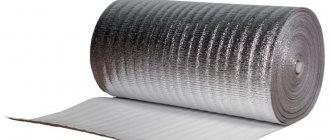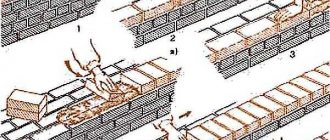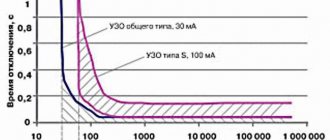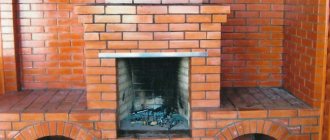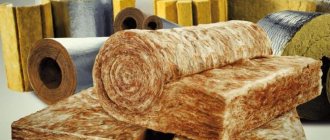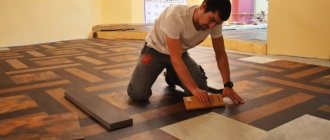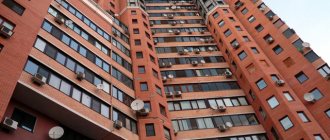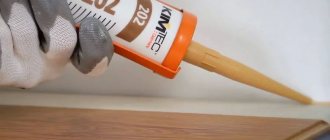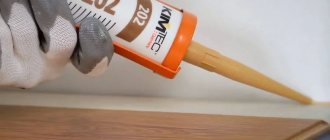When construction of a facility is underway, the issue of sound insulation often arises. To solve the problem, there are many different materials that differ in composition, characteristics and features. Euroblocks are considered one of the effective means today. Today, many manufacturers of insulating materials offer this product, as it is actually effective and affordable.
@EvroBlok
As you know, there are two types of noise: airborne and vibrational. Considering the structure of the material, we can confidently say that it will cope perfectly with both types of noise. The porous structure of the material provides effective protection with a small thickness of the insulating layer. It is worth noting that to effectively protect a room, an integrated approach is required, that is, it is necessary to treat not just one surface in the apartment, but all the walls, floor and ceiling, only in this case can the expected result be achieved. This material will tell you how to install sound insulation.
Also, do not forget that Euroblocks are suitable not only as effective sound insulation; the porous structure will also protect the house from frost, thanks to its thermal insulation properties. The material is made on the basis of polymer components, which makes it much more durable than natural insulation materials.
Where and how to use Euroblock sound insulation
Sound insulation Euroblock consists of sheets with a thickness of 20 - 50 mm. A feature of the material is the heterogeneity of the densities of its layers. They are made of polyethylene foam and limit vibration and noise as much as possible due to their heterogeneity. Different thicknesses and densities make it possible to increase resistance to the propagation of sound waves and reduce resonance. Euroblock allows you to isolate 56 dB of sounds.
Penotherm – for wall insulation
One of the newest developments in the PenoHome “Euroblock” line is noise insulation using foamed polyethylene “Penotherm”. The Penotherm material consists of several polymer layers of different densities. Thanks to this multilayer structure, the soundproofing sheet acquires the ability to absorb noise of varying volumes (both internal and external). Experts call foamed sound insulation one of the most expedient inventions that allows you to equip a living space and get the highest quality results.
Features and Benefits
Main properties of the material:
- The main property of the Euroblock is the insulation of premises from extraneous noise.
- In addition to noise suppression, Euroblock is capable of providing thermal insulation.
- The material is resistant to physical aging or rotting.
- Can be in an aggressive environment and fully perform its functions.
- Durability. The minimum service life of the material is 20 years.
- The technology for laying the Euroblock does not involve the use of personal respiratory protection equipment. This is ensured due to the environmental friendliness of the material.
- The slabs are well suited for installation in any room and on any surface. Thanks to the versatility of the Euroblock, it can be used to soundproof the entire house.
- The standard size of the material allows it to be easily laid on any surface.
Specifications
The main thing when choosing a soundproofing material will be the combination of its technical characteristics:
- The main parameter is the sound insulation index, it is up to 56 dB.
- Another important parameter is the thermal conductivity of the material. Its coefficient is 0.04 W/m*degree Celsius.
- Vapor permeability is 0.001 mg/m*h*Pa.
- In 24 hours the material absorbs 0.74% water.
- Euroblock can be used while maintaining all its characteristics at temperatures from −40 to +90 degrees Celsius;
- The inside of the material is gray or yellow.
Installation
Fastening the Euroblock to surfaces is carried out in several stages:
- First, you should prepare the surfaces of the walls and ceiling for installation. They must be cleaned of the previous coating and dried thoroughly.
- Installation of the Euroblock should ensure a tight fit of the material to the surfaces. To do this, install a sheathing on the ceiling or wall, which lags behind the surface exactly by the thickness of the sound insulation slabs.
- The Euroblock is laid, filling the entire space between the sheathing and the wall. All blocks must be laid end to end.
- For additional fastening, the blocks can be fixed to the surface using dowels and “fungi”.
- To achieve the greatest sound insulation, all seams are additionally taped.
Certificates
- The fire safety certificate confirms that the material belongs to the KM5 fire safety class.
- The hygienic certificate limits the scope of use of the material. It can be used in industrial or civil engineering, in the form of soundproofing or cushioning material, for the production of consumer goods. According to this document, it is necessary to carry out production control once every 12 months.
- The sanitary and epidemiological report confirms compliance with GN rules 2.1.6.1338-03 and 2.1.2.729-99.
Standard sizes
When choosing a soundproofing material, it is necessary to accurately select its dimensions. All Euroblock products are produced in the form of mats of a given thickness and size:
- The thickness of the mat varies from 20 to 50 mm, in increments of 10 mm;
- The width of all mats is the same and is 600 mm;
- The length also does not differ and is equal to 1000 mm;
- One package of mats with a thickness of 20 mm will contain 20 pieces, 30 mm - 13 pieces, 40 mm - 10 pieces, 50 mm - 8 pieces. we can conclude that the height of each package will be 400 mm.
Thanks to the standard size for all products, installation and construction planning can be significantly simplified.
Recommendations for use
For different purposes you will need Euroblock mats of different thicknesses:
- for hydro- and thermal insulation of foundations, slabs with a thickness of 20 mm or more will be sufficient;
- Euroblock with a thickness of 20 mm will protect unheated loggias and balconies from freezing and ensure their hydro- and sound insulation;
- materials with a thickness of 30 mm or more will ensure sound insulation of facade walls and roofs;
- the thickest mats will be used to provide heat on a heated balcony and soundproof interior partitions or load-bearing walls.
Soundproofing euroblock reviews
Mil_D Well, tell me, how do you insulate the ceiling? Will you stick some kind of vibroplast on it? And what will this give you? — The reinforced concrete slab is too massive to extinguish the standing wave.
If you have a great desire to build yourself a zero acoustic cabin, then only the “room within a room” option is suitable, here is an excerpt from an interview with one professional person:
“In conditions of massive thick walls made of brick and concrete, good insulation of airborne noise is achieved, but structural noise cannot be avoided, since powerful structures are good conductors of vibrations (for example, from an elevator). Therefore, when designing such walls, it is necessary to make vibration-decoupled junctions between the wall and the floor and ceiling. In such cases, you can achieve very good sound insulation, reaching up to 70 dB.
Customer review:
I think all these new materials are complete bullshit. The house needs to be built only from bricks. I would build myself out of red brick. Our ancestors were not fools; they knew how and what to build from. But if you have neither intelligence nor money, then a foam block is better. At least it’s clear what it’s made of and won’t dissolve in the rain. I myself built a garage box from this material. At that moment there was no money for normal materials, and there was no time. Interestingly, the blocks were delivered on the same day, I paid on the spot, it was convenient. The ceilings were made from logs, boards and rolled metal. I reinforced the gate so it wouldn't fall off. It turned out cheap and cheerful. You can park the car. Of course, I wouldn’t live in such a barn, but who knows.
Answer:
Vladimir Timofeevich, good afternoon! Thank you for your feedback, feedback from each of our clients is very important to us! But let me disagree with you a little... Not everything new is bad and without progress we would now be living in the Stone Age. We agree that the construction industry is very conservative, and that everything new is perceived with hostility, especially by builders who have been working on construction sites for 20 or 30 years. But just look at sand-lime brick: it’s a heavy, cold material, construction from it turns out to be very expensive, since you need a very strong foundation, expensive masonry work, a huge amount of masonry mortar, special equipment for installation, expensive delivery, and in the end the house turns out to be very cold and it still needs additional insulation, but it has the strength to build a 10-story building. What's the point if they most often build 2- and 3-story houses? Perhaps earlier brick was so cheap that it paid for all these disadvantages, but now with the advent of cellular concrete, the cost of construction has been reduced by 30-40%, while the houses are very warm, durable, and environmentally friendly! We also agree that there is a lot of “raw meat” on the market now, but if you work with a plant that undergoes annual certification tests, where there is product quality control, etc., then where is the risk? By the way, foam concrete has been actively used in Russia since the early 80s, and in Germany since the 50s, and its properties and qualities have already been time-tested and approved by construction institutes and laboratories, so in our case this is not something new, but a well-proven material, despite the fact that now it has no analogues in terms of its effectiveness!
Review: Sound insulation Izoplat is a good sound insulation, but if we did it ourselves, we wouldn’t buy it.
In July of this year, we finally got to the ceilings during the renovation. We decided to make tension ones, which I have already talked about, since new electrics were running along the ceiling, and in order to somehow isolate ourselves from the noisy upper neighbors, it was decided to soundproof the ceilings. I honestly tried to do this myself in the kitchen and hallway, but I was so exhausted with them because of the bunch of wires that I decided to entrust the soundproofing in two rooms to professionals. You can read how they worked in my review of “Decor” stretch ceilings.
Frameless method of applying sound insulation
Before gluing the sound insulation (the Euroblock is not glued to the wall as a whole, but is only covered with damping tape around the perimeter), the Penotherm canvas is attached to the upper surface of the wall using plastic dowels. On top of the Penotherm canvas, sheets of gypsum fiber are attached to the concrete using plastic dowels or dowels. All joints are coated with sealant.
At the next stage, the top layer is fastened, which will act as upholstery. These can be plasterboard sheets, on one side having undergone special treatment or pre-pasted with wallpaper. Having cut off the excess soundproofing material peeking out from under the upholstery layer, all joint lines are again treated with sealant.
Euroblocks for soundproofing walls: nuances of application
During the construction of a particular facility, the issue of sound insulation arises, which can be solved in different ways. For example, there is an option to use so-called Euroblocks. Many modern manufacturers actively offer this type of product.
Peculiarities
Euroblock is a sheet laminated material. The layers of this product consist of polyethylene foam, which comes in different densities. It is due to this that increased noise insulation is ensured, and external sounds will no longer interfere with your quiet life.
It is worth mentioning separately that PenoHOME blocks are designed not only to solve the problem with external noise, but are also excellent as a material for thermal insulation. The main feature of these products is that by using these blocks during construction work, you can easily solve several problems at the same time.
Euroblock is a universal material that is perfect not only for walls and partitions, but also for the attic. In addition, the material is environmentally friendly and has a long service life.
Modern manufacturers claim that such blocks will last about twenty years.
PenoHome Euroblock material line: sound insulation of a city apartment
The concept of comfort is incompatible with screaming, family conflicts and other sources of harsh sounds that fill an apartment building. High-quality sound insulation of the room will help solve the problem.
What is the advantage of PenoHome “Euroblock”? Anyone can install sound insulation with their own hands, without involving specially trained workers in this process. This method of isolating residential (and non-residential, if necessary) premises from external noise will not require the use of bulky parts and massive coverings that occupy part of the usable space.
Characteristics
Soundproofing a living space is important. For this reason, you should definitely take into account all the characteristics of the blocks in order to know exactly which one is suitable for your case.
As a rule, the minimum thickness of the blocks is 20 mm, and the maximum is 50-60 mm. Even with a minimum thickness, such a block can create a soundproofing effect and eliminate extraneous external noise.
The sizes of the blocks are very different: 20x600x1000 mm, 30x600x1000 mm, 50x600x1000 mm. But they all differ only in thickness, and the width and depth of the material are usually standard - 600x1000 mm. For this reason, this material is universal for installation.
Euroblocks with a minimum thickness are perfect for repairing premises such as a balcony or loggia. For insulation and soundproofing of walls, it is best to choose a material 30 mm thick, and blocks 40-50 mm thick are suitable for attics and ceilings.
Advantages and disadvantages
Undoubtedly, this material has enough advantages. Separately, it is worth noting its thermal insulation qualities. If you use these blocks during construction, you can easily solve the problem with sound, hydro and thermal insulation: insulate the ceiling and walls so that the house will be warm and cozy in any weather.
If we talk about the minuses, then sometimes you come across low-quality material from an unverified manufacturer , which cannot cope with its task and such problems as thermal insulation and noise insulation will not be solved. Therefore, we recommend listening to customer reviews and taking into account the opinions of those who have already successfully carried out repairs using Euroblocks.
Useful tips
Of course, it is not difficult to buy building materials on the market, but it is quite difficult to choose a high-quality and original product. If you plan to create reliable and durable sound insulation, you need to choose a reliable manufacturer and supplier. You can learn how to glue the material from the material proposed above.
@EvroBlok
Recently, more and more often, buyers purchase goods through an online store, which saves time and money. If you purchase products, do so from a proven and reliable supplier who has exclusively positive customer reviews. You shouldn’t trust the first one you come across, since today there are many fakes, and after a year making new sound insulation is quite difficult and not financially profitable.
Installation
Installation of Euroblocks does not require any special professional skills. If you know some of the nuances and installation methods, then you can easily handle it yourself. Before you begin installing the blocks, you should carefully prepare the surface: it must be absolutely dry and clean. In addition, you need to take care to make a sheathing on which the blocks will be attached.
The material should be mounted to the surface with the side where the reflective insulation is located. The blocks do not require any special or additional fastening. The main thing is that the installation must be done end-to-end, otherwise the ideal soundproofing effect will not be achieved.
Afterwards, it is recommended to glue all seams with construction tape, which will enhance the sound insulation effect.
For more details on the installation of Euroblocks for sound insulation, see the following video.
Sequence of installation work
What do you need to know when starting insulation work? First of all, it is necessary to prepare the surface intended for applying foamed polyethylene from PenoHome “Euroblock”. Sound insulation of external and internal ceilings (in this case, walls) will become possible only after the surfaces are cleaned of dirt, degreased and dried.
In addition, sections of walls dotted with small and large cracks, crevices and holes need to be patched up. The procedure for leveling the walls can be skipped for the reason that the PenoHome “Euroblock” material for sound insulation is so elastic that it will hide all the unevenness. The insulating material is secured using a sheathing (guide structure). Installation work is carried out so that the sheets are in close contact at the joints. Each individual sheet should fit snugly to the surface.
The most common structures today are plasterboard partitions, which are attached to a frame made of wood or metal. Soundproofing material is inserted into the gaps between sheets of drywall or placed between the wall and a layer of drywall. The final stage is to seal the seams with tape. This is necessary to create the most reliable insulation from external noise.
